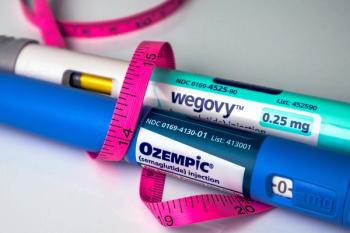
- Drug Topics May 2024
- Volume 168
- Issue 04
Exploring the Role of Pharmacists as Facilitators of Harm Reduction Resources
According to Anita Jacobson, PharmD, pharmacists should actively facilitate access to harm reduction programs by providing information and resources, ensuring the person who uses drugs doesn’t have to navigate the landscape on their own.
The unregulated drug supply is continuously evolving, and with it, health care professionals must keep pace to implement effective harm reduction efforts. But, with the landscape in a constant state of flux, it may be hard to establish best practices. To stay on top of the constant learning curve, Anita Jacobson, PharmD, clinical professor and program director of the Community First Responder Program at the University of Rhode Island, recommends going back to the basics.
“Just find out what is near you,” said Jacobson in a conversation with Drug Topics at this year’s American Pharmacists Association Annual Meeting & Exposition. “Google—literally—in your area, ‘harm reduction organizations near me.’ Educating ourselves about what free resources are available is key.”
Jacobson stressed that it’s not the person who uses drugs’ responsibility to overcome roadblocks associated with harm reduction efforts. Pharmacists, as health care providers, should actively facilitate access by providing information and resources, ensuring the person who uses drugs doesn’t have to navigate the landscape on their own.
“If there’s any kind of barrier to [naloxone]—like a copay, or lack of insurance—if you know right away that [a person who uses drugs] can get free naloxone, and you know the name of the organization, website, or physical address, that is so much better than just saying, ‘There’s a copay, sorry, I guess you have to figure it out,’” said Jacobson. “We don’t want to put it on that person to solve access issues; we want to facilitate those access issues. That’s what makes us the most accessible, helpful, and holistic health care provider.”
It's also important that pharmacists take a user-centric approach when administering care. Offering various naloxone options, for instance, ensures there are multiple products available to meet various people’s needs.
“Remember that some people who use drugs really do prefer the vial and syringe naloxone, so that is still an option,” said Jacobson. “Nasal spray is great for community mass distribution…but for some people who use drugs, they are very comfortable titrating the dose to what they need. You want to have access to both.”
Articles in this issue
over 1 year ago
FDA Approves Novel Topical Therapy for Molluscum Contagiosumover 1 year ago
Reviewing Efficacy, Safety of Weight Loss Therapies in T1Dover 1 year ago
Sunscreen Safety: What Every Pharmacist Needs to Knowover 1 year ago
In Frankfurt, Pharmacy Takes a Different Approachover 1 year ago
OTC Product Roundup: Skin Careover 1 year ago
How Individuals are Committing E-Prescription Fraudover 1 year ago
Measles Cases in the US Increased Significantly in 2024Newsletter
Pharmacy practice is always changing. Stay ahead of the curve with the Drug Topics newsletter and get the latest drug information, industry trends, and patient care tips.




